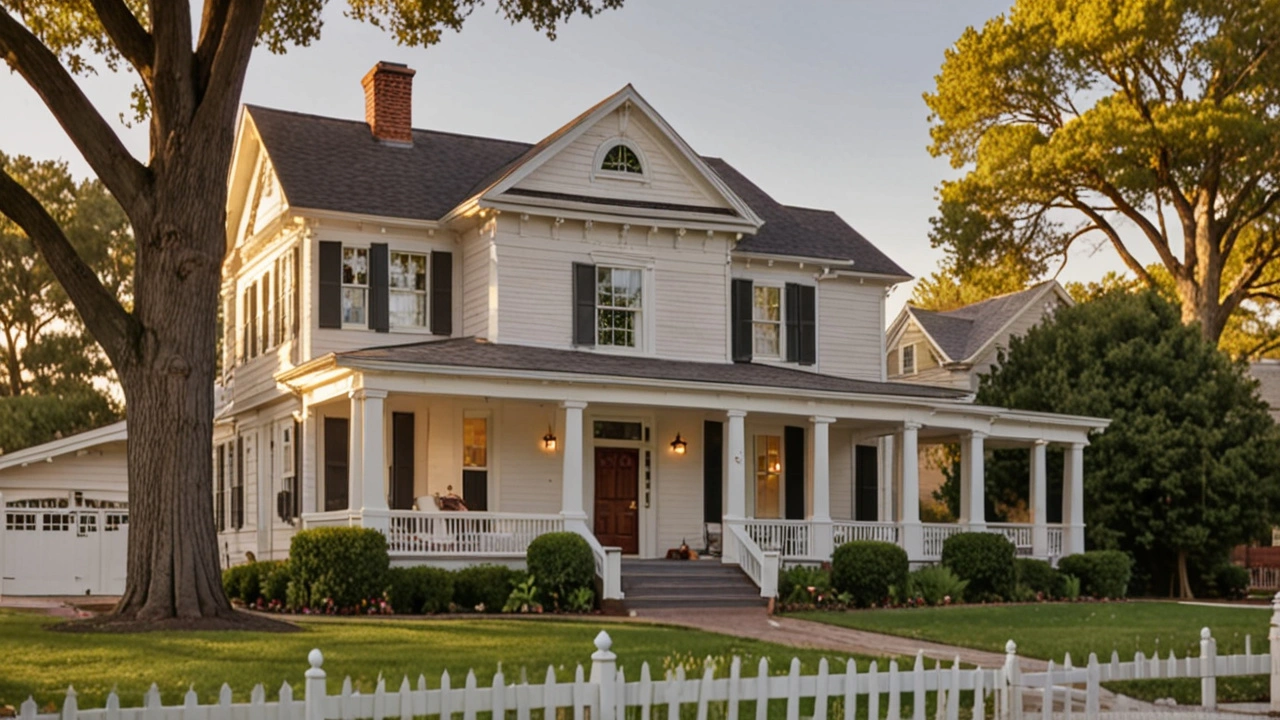Colonial Revival: How to Spot, Restore, and Modernize These Homes
Colonial Revival homes are everywhere in American neighborhoods. They borrow from 18th-century colonial designs but got a big push in the late 19th and early 20th centuries. You’ll notice symmetry, centered doors, multi-pane windows, and classical details like columns or pilasters. Knowing these cues helps you identify a Colonial Revival quickly and avoid costly mistakes during renovation.
Key exterior features are simple to spot. Look for a balanced front facade, a prominent entry with a decorative crown or portico, and evenly spaced double-hung windows with shutters. Roof shapes range from side-gabled to gambrel on Dutch Colonial variants. Materials usually include wood clapboard, brick, or sometimes stucco. Small details — dentil molding, fanlights, and sidelights — often signal an authentic or well-executed revival.
History and Varieties
The Colonial Revival movement revived interest in early American architecture after the Centennial of 1876. Architects mixed Georgian, Federal, Dutch, and even Spanish colonial elements to suit new tastes. That’s why you’ll find Georgian Revival mansions with heavy cornices and Dutch Colonial houses with gambrel roofs in the same town. Period details were often simplified for modern living, so not every house is a museum piece.
Practical Tips for Owners
If you own or plan to buy a Colonial Revival, start with the entry and windows. Restoring original wood windows and shutters protects character and usually costs less long term than replacements. Add weather stripping and storm windows to improve efficiency without changing appearance. When updating kitchens or bathrooms, hide modern systems behind period-appropriate trim and choose simple hardware that matches the era.
Exterior paint choices matter. White or muted historic colors keep the classic look, while a bold door color adds personality without breaking style rules. For landscaping, plant symmetrical beds and simple walkways to echo the house’s balance. Avoid overly ornate garden features that conflict with the restrained colonial look.
For larger projects, check local preservation rules. Many neighborhoods with Colonial Revival houses have guidelines for changes. If you want a modern extension, design it as a clear but compatible addition. Use similar rooflines, siding, and window proportions so the new part reads as a contemporary partner, not a fake antique.
Where to study examples: historic districts, college campuses, and civic buildings often showcase Colonial Revival at its best. Also look at early 20th-century pattern books and catalogs for authentic trim and door styles. If you need help, hire a contractor familiar with historic homes and ask for references showing restoration work.
Colonial Revival remains popular because it feels familiar and balanced. With careful choices, you can update these houses for comfort and efficiency while keeping the look that made them beloved. Want specific product or paint recommendations for a project? I can suggest options based on your climate and budget.
Typical restoration costs vary, but expect higher expenses for structural fixes and original materials. Prioritize roof, foundation, and windows to protect the whole house and save money later. Ask local experts early.

Colonial Revival Architecture: A Timeless American Tradition
This article dives into the rich history and enduring appeal of Colonial Revival architecture. It explores its origins, key characteristics, and why it continues to be a popular choice for American homes. The piece also offers tips on recognizing and embracing this traditional style in modern living.
Read more